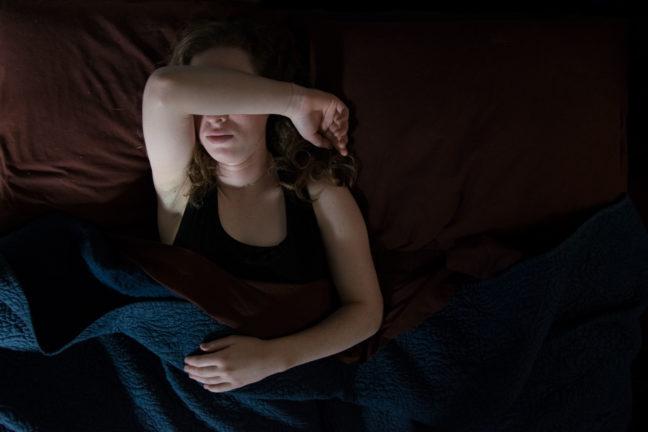Dreams are movies and University of Wisconsin researchers have just located the production studio in our brain necessary for creating them.
Ben Baird, co-author of the study and researcher at the Center for Sleep and Consciousness, said this finding debunks the misunderstanding that “[rapid eye movement] sleep equals dreaming.”
While people dream up to 90 percent of the time in REM sleep, studies have shown 70 percent of participants in non-REM sleep also have dreams, Lampros Perogamvros, co-author and research fellow at the Center for Sleep and Consciousness, said.
Baird, Perogamvros and their team, however, report that activity in the posterior, or rear, region of the brain takes precedence over sleep stage when it comes to dream production.
“There appears to be a very similar core region that’s involved with dreaming or experiencing something irrespective of whether you’re in REM or non-REM [sleep],” Baird said. “And that’s interesting because it suggests maybe an important region of consciousness.”
Pulling an all-nighter for your exam? UW researchers say think again
This discovery brings neuroscientists one step closer to understanding consciousness, or our state of “experiencing,” which takes the form of dreams during sleep, Perogamvros said.
Because people are constantly experiencing while awake, the CSC researchers took advantage of human’s least-taxing condition, or sleep, to study consciousness.
“One of the big things missing from our scientific worldview is basic experience and how that emerges from the brain,” Baird said. “Even something as low-level as just seeing the color red, for example, in this terminology is considered a conscious experience.”
During sleep, Baird said people cycle between periods of unconsciousness and in the form of dreams, consciousness.
This makes it simpler to compare brain activity of a healthy individual under a consistent and normal state of mind, Baird said.
“[Sleep] affords a unique opportunity to study consciousness in healthy individuals within the same state,” Baird said. “And also avoids similar confounds because people aren’t overtly doing a task in this experiment, they’re just sleeping.”
Using an electroencephalogram, which measures brain activity, the researchers tested 32 sleeping participants untrained in dream recall and 10 participants trained in dream recall.
They woke the participants in 30-minute intervals throughout the night to ask if they could recall a dream and the contents of that dream, such as seeing faces or hearing voices.
When the team compared EEG reports of participants who could recall faces with those who could not, they noted high brain activity among the recall participants in the fusiform face area — the same brain region typically activated during wakeful facial detection, Perogamvros said.
Even the Wernicke’s area, activated during wakeful speech detection, was activated in participants who recalled speech in their dreams, Baird said.
Other regions that were activated in recall participants’ dreams were occipital and parietal regions, Baird said, which are also responsible for visual and sensory perception during wake.
These sensory areas make up the posterior region of the brain, Perogamvros said.
Similar activation of this posterior region during wake and dreaming helped the researchers discover its importance in dream production.
Knowing the location of dream production, the researchers again performed an EEG, on seven different participants, to test if they could predict whether or not they had a dream, Baird said.
The researchers were able to predict the presence of a dream 91 percent of the time and predict the absence of a dream 80 percent of the time, according to their paper published in “Nature Neuroscience.” Perhaps one day people will be able to direct their own dreams, Baird said.
“[These posterior areas] are responsible for multisensory integration,” Perogamvros said. “So it’s rather expected that they play an important role in dreaming, because they can integrate information from different parts of the brain and produce a world simulation the dream represents.”













